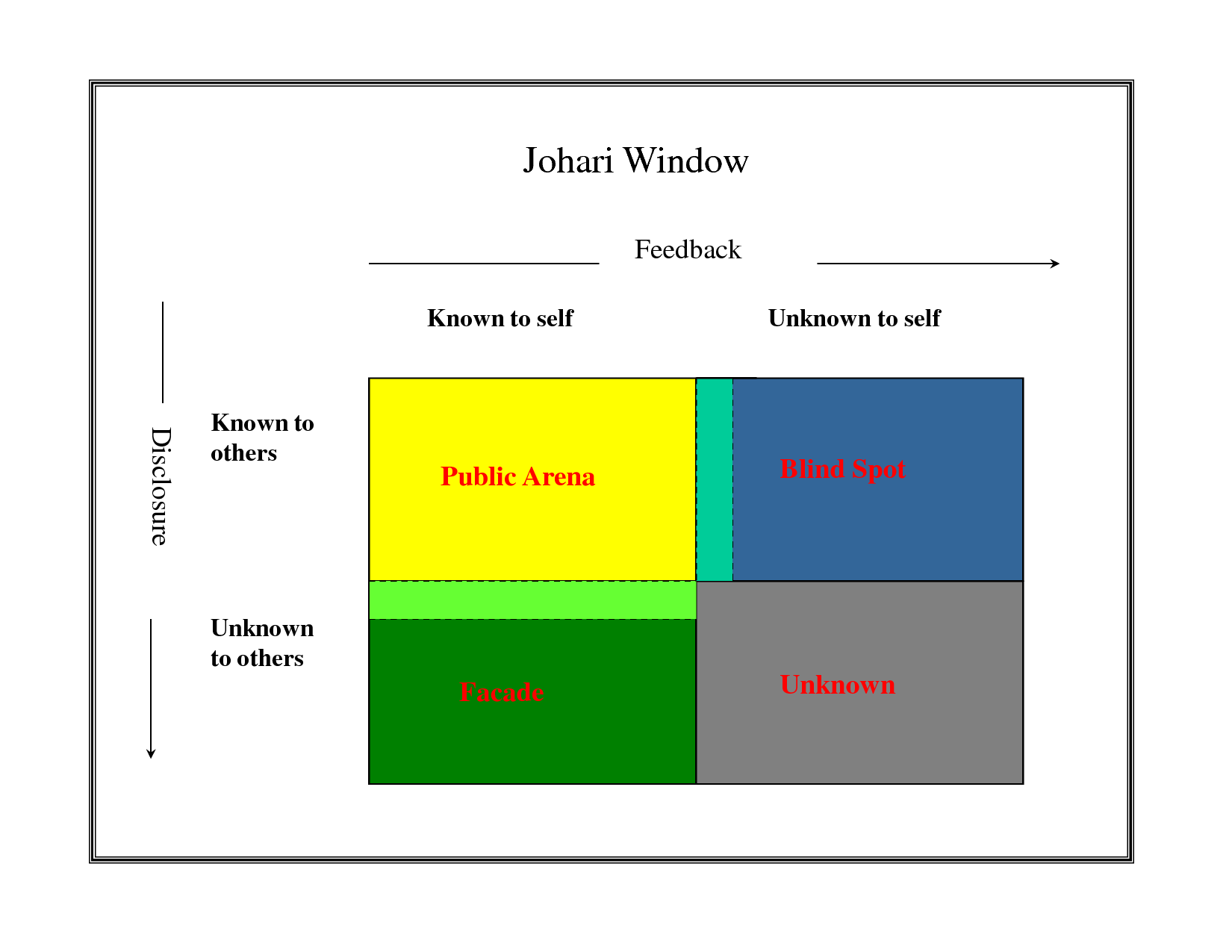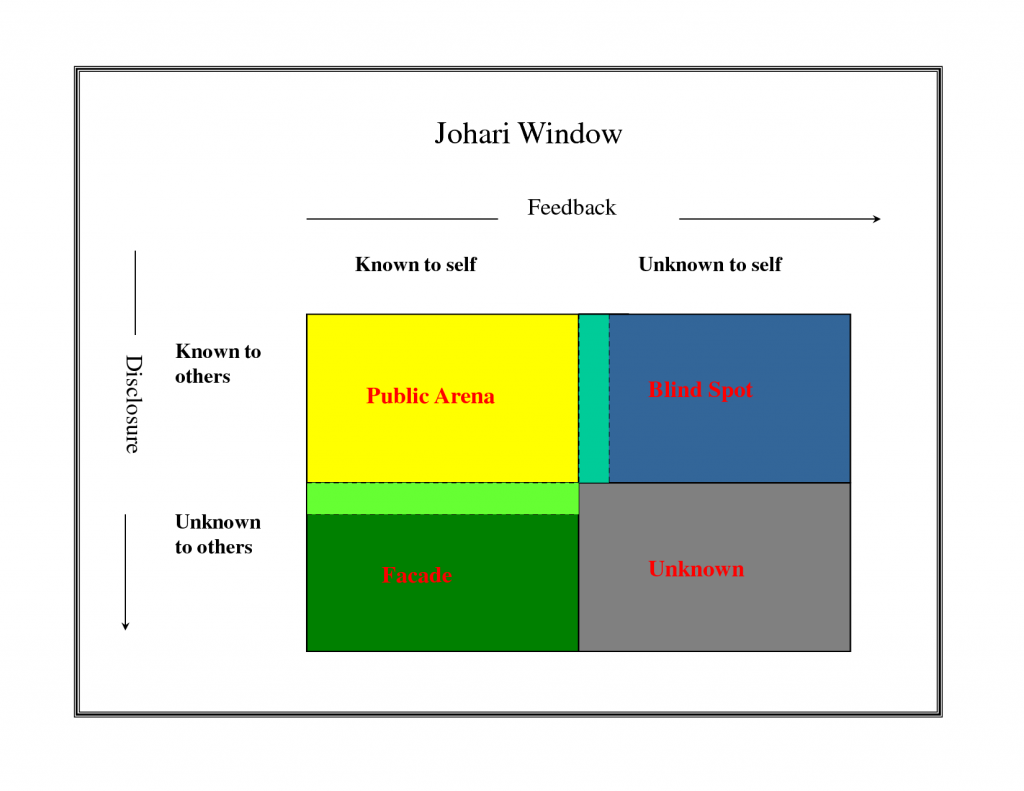Today, I’m going to offer a slight follow-up to last week’s posting about personality. There are many different models for what the personality is and how it works, and most of them will make sense to most readers. Let’s look through the Johari Window.
I believe I was first exposed to the Johari Window in a group counseling class, and it is definitely an effective tool to promote disclosure and feedback in a group of people. It was named by its inventors, Joe Luft and Harry Ingram (Young, 2009). Personality is a way of conceptualizing the self, and there are many different parts to it depending on perspective and model. The Johari Window is an analogy that “asserts that there are four parts to the personality: the public self (known to the self and others); the blind self (known to others but not to the self); the private self (known to self but not others); and the unknown self (unknown to self or others)” (Rosenthal, 2003, p. 175). I’m very much a visual person, so if you’re like me, then you’ll probably find the feature image today useful in interpreting the written description. Keep in mind that the different panes are often labeled areas 1 through 4 with the first row being I and II and the second, III and IV.
Within most relationships the goal is to get to know the other person or people, and thereby shrink the size of the unknown area of the personality. The problem is that if you look at that particular pane, it is also unknown to the particular person. Thus, most interaction in relationships relates to the first column. Young (2009) explains, “Self-disclosure widens the public area (Area I) and shrinks the hidden area (Area III)” (p. 190). Typically, the only way to find out more about the second column (i.e., things unknown to ourselves) is to get feedback from others; the result is a decrease in the size of the blind spots (Area II) of the personality. Only when we both self-disclose AND accept feedback from others do we ever really start to shrink the “unknown” part of ourselves (Area IV).
Cool, huh? The Johari Window is a great starting point in groups and individuals wishing to have a conversation about opening up and having an honest discussion. If you want to learn more about practical applications of the Johari Window in the business world, then check out businessballs.com .
References
Rosenthal, H. (2003). Human services dictionary. New York: Brunner-Routledge.
Young, M. E. (2009). Learning the art of helping: Building blocks and techniques (4th ed.). Upper Saddle River, NJ: Pearson Merrill.

